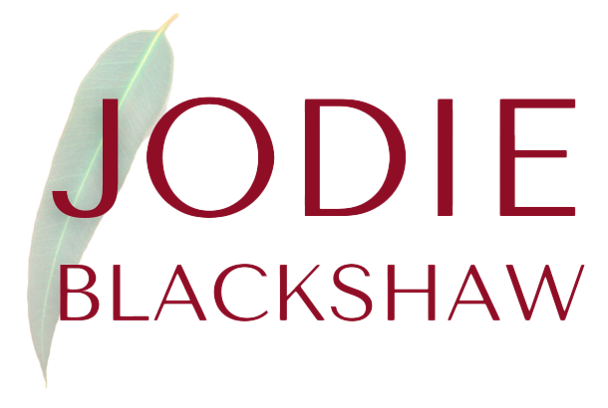The Première
How can you, the conductor, make sure it's awesome for the ensemble AND the composer?
I’m sitting here in Vancouver, waiting to board an aircraft to take me home to Australia. It’s been an extraordinary week that has included two world premières, a recording session, a professional development seminar with local teachers and workshops with local schools.
To say I’m a little spent is an understatement.
This is my second visit to Vancouver this year. On the first occasion, I attended a Summer music camp held at the University of British Columbia (UBC) called the UBC SMI (Summer Music Institute). This camp provided me with the opportunity to collaborate with Dr. Robert Taylor (Associate Professor of Conducting & Ensembles at UBC) and bring to life two new works commissioned by a British Columbia-based consortium. One of these works is a vulnerable, gentle expression of a moment portrayed in a story written by Squamish First Nations artist and storyteller Roy Henry Vickers. Peace Dancer (approx. Grade 5) explores what it means to discover humility and grace through tragic circumstances.
In Peace Dancer, I reconnoitre a new compositional approach, experimenting with new-to-me orchestration techniques. Such a risk leaves the composer wide open to failure, but risk is necessary if growth is to occur.
“It is only through failure and through experiment that we learn and grow”
In the first rehearsal, I honestly thought the piece was a complete failure. My new offering just didn’t seem to work. After that first rehearsal, I called my husband in tears ‘Peace Dancer is a disaster’ I told him. Rob also called a conducting colleague and said something like ‘what am I going to do?’
Both of us needed time and space to plan a strategy. That night we sat down and scoured through the piece. Three or so hours were spent going through each and every bar. Rob was incredibly generous with his energy and knowledge yet not once did he cast judgement. He genuinely believed in the work and wanted to help. (It needs to be said at this point that we were working with high school students and notably this piece was going to stretch every ounce of their musicianship; but the piece also had to be scored so that it was achievable by good high school bands. Could I do this and still maintain my artistic intentions?)
I’ll never forget Rob saying to me: “I’ll work as hard as I have to if you really want to score this, THIS way. But, if you are willing to change a few things, I believe you can still achieve what you want with greater, repeated success.”
What was extraordinary to me was the ability to collaboratively and intensely work with a highly skilled and knowledgeable conductor on the notes themselves. Not the harmonies or melodic lines, just the orchestration of particular “colours” and how to notate them so that the students could successfully achieve the work. The experience taught me so much about how a conductor thinks and this has changed my compositional approach when writing at the professional level.
Rob’s extensive knowledge of high-end repertoire (and considerable experience in front of an ensemble filled with outstanding undergraduate and post-graduate students) stretched me in to a new realm of thinking and hearing. Our collaboration continued throughout the weeklong UBC SMI and several changes were made in situ. On the Friday night of camp (with the final concert occurring the next day) we experienced a ‘million-dollar moment’. On this occasion, the ensemble, conductor and composer became one; the piece was born. Peace Dancer was no longer mine, it was ours. As it should be.
For the record, I re-wrote the opening 7 measures 15 times, and the moment of self-discovery 17 times. Just days before the world première I was making further adjustments (still working in collaboration with Rob and his ensemble via Skype). On the day of the recording (after the première), there were further tweaks with a couple of very good ideas stemming from members of the ensemble. From inception to completion there are 76 evolving versions of the score, 19 of those occurring after the piece was delivered to the consortium.
Peace Dancer is just 5 minutes long.
“All that is not perfect down to the smallest detail is doomed to perish.”
Some may read this and think that I am simply not a very good composer. And perhaps they are right. But I will say this; this process was necessary for me in order to realise the ‘new sound’ I was striving to achieve. I’m not copying anyone else here, but exploring the wind ensemble and attempting something new. This is what takes time, patience and experimentation (and why collaboration is so important).
(Remember Mahler’s 1st Symphony had three dramatic transformations over 9 years before it was published!).
So why share this process with you?
When a piece is written for a commission, composers need you, the conductor, to understand that the work isn’t yet finished. There is a final, VITAL compositional stage that involves you and your ensemble. I call it the “birthing process” and it’s where the conductor reviews the score and works in a collaborative way alongside the composer to bring the piece to life. The piece can’t live without complete symbiosis between composer, conductor and ensemble. For me (and I appreciate all composers are different), the more we work together – the better.
Just consider the relationship between John Mackey and University of Texas (Austin) giant Jerry Junkin, or Stephen Bryant and renowned Michigan State University Director Kevin Sedatole. They have worked together so closely now, for so many years, that the voice of the composer lives through these conductors and their renowned ensembles. I can say for certain that Peace Dancer would not be what it is today without Rob Taylor and I don’t care who knows it. Having an upfront, honest, egoless relationship with the founding conductor of your new work is paramount. As is having a conductor who has extensive knowledge of the repertoire in which your work is based plus a vast array of conducting gestures to effectively transmit your compositional intention.
“Technique is communication: the two words are synonymous in conductors”
WHAT NEW WAVE?
Emerging from the cracks (if you are not already aware) are incredibly gifted composers that are asking more from the wind band (hooray!). Composers like Gregory Mertyl, Joel Puckett, Stacy Garrop, Martha Mooke, Catherine Likhuta and Carter Pann (to name but a handful) are pushing the envelope and moving away from the ‘louder is better’ era of band composition (some have been doing this for longer than others). With composers such as these exploring a whole new scoring strategy for the high-end wind band, listening with the more traditional approach to balance and tone (where several parts are doubled and unisons are King) will make it a challenge for you and your new-thinking composer to attain true symbiosis. Maybe your band won't sound like a traditional ‘band’ with this new repertoire and you will need to try something else – and isn’t that a good thing? How else does the wind band genre continue to evolve?
“Don’t give up trying to do what you really want to do. Where there is love and inspiration, I don’t think you can go wrong.”
If you find yourself in the position of realising a new experimental work, may I suggest that the very first thing you should do is pick up the phone and ask your composer what they expect from you during the realisation of their new composition. Discuss what is possible, plan a timeline and involve your composer as much as possible in the process. You and your ensemble won’t regret it. Promise.
10 WAYS A CONDUCTOR CAN COLLABORATE WITH A COMPOSER WHEN PREMIERING A NEW WORK:
Listen to other works by the composer: get your head into the ‘sound’ of the composer (better still, ask the composer what works you can listen to that provide an idea of where this new work is coming from). Similarly – share recent concert programs with your composer to make them aware of your knowledge base.
Do your score study then Skype with the composer before the first rehearsal to understand artistic intention and iron out any queries.
Record your rehearsals of the new work (when the composer isn’t present) and call out questions/queries to the composer. Share this with your composer and invite feedback before your next rehearsal. Skype if necessary.
Share composer feedback with the ensemble, then record and share consequent sections of the work with the composer. This is especially important prior to the composer attending in person so they know what they are walking into. This will save time and keep everyone on the same page.
Find the musical intention – is the orchestration portraying that intent?
Play around with tempo – sometimes what works in the composing studio is totally inappropriate in real life. If something feels awkward – say so!
Is the writing appropriate for the target age-group? When works are written for younger students, consider range, instrumentation and in particular, the educational process (and how you can best involve young students).
Question the composer (seriously!): ‘this time signature feels strange here’ – ‘I think this section would work better if..’, ‘we tried muting the brass here and it blends better – what do you think (then provide recording)”. I realise not every composer is open to this – but maybe they are and you just don't know it! Discussion at the very beginning regarding how open your composer is to suggestions is helpful.
Question yourself: am I listening with ‘old ears’? Is there a new sound being used that requires a different approach from me in order to extract what the composer is looking for? What do I need to change?
Question your gesture: if you have conducted a range of older-style repertoire, who can you seek advice from regarding alternate gestures and rehearsal strategies?



